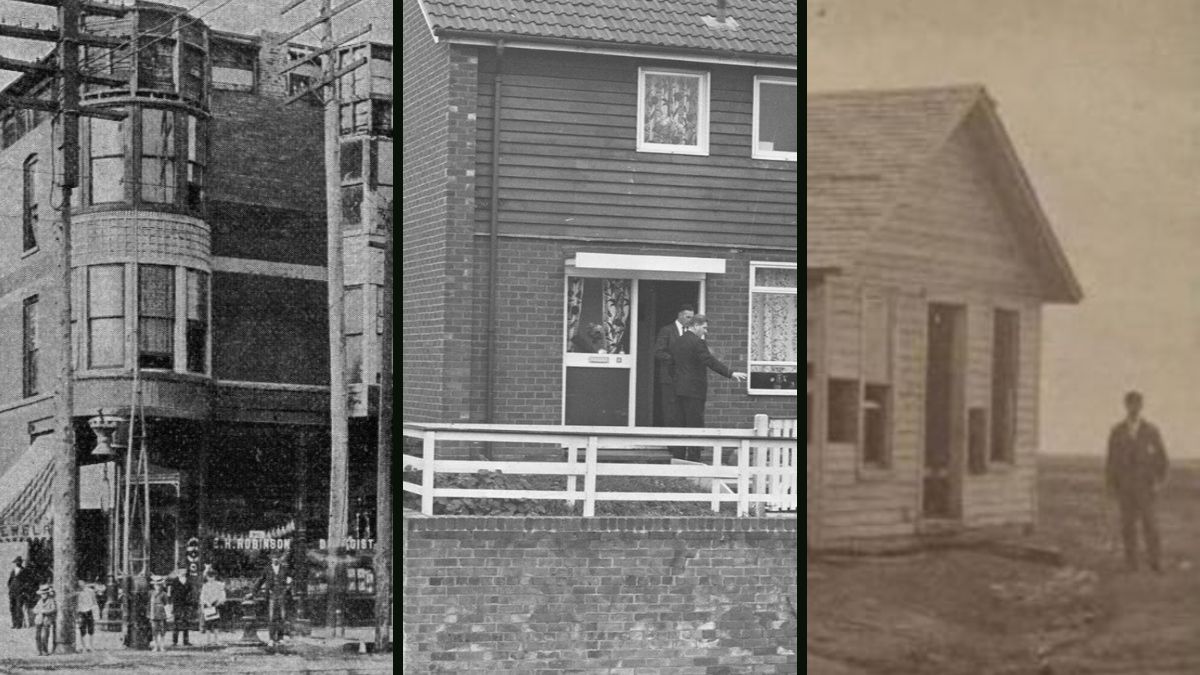Some places are stained not just by blood, but by memory. These homes, once ordinary, even charming on the surface, became infamous for the horrors that unfolded within their walls. From unspeakable crimes to lingering evil that seemed to haunt every room, their violent legacies were so disturbing that the only solution was demolition.
Communities pleaded. Survivors refused to walk past. Paranormal investigators warned of lingering dread. Whether driven by superstition, trauma, or the sheer weight of public outcry, these homes were ultimately reduced to rubble; erased to forget what should never have happened.
These are the 10 murder homes so horrific, they were torn from the earth. Not just for what happened there, but because no one could bear to live with what they left behind.
10. Fred And Rosemary West’s House
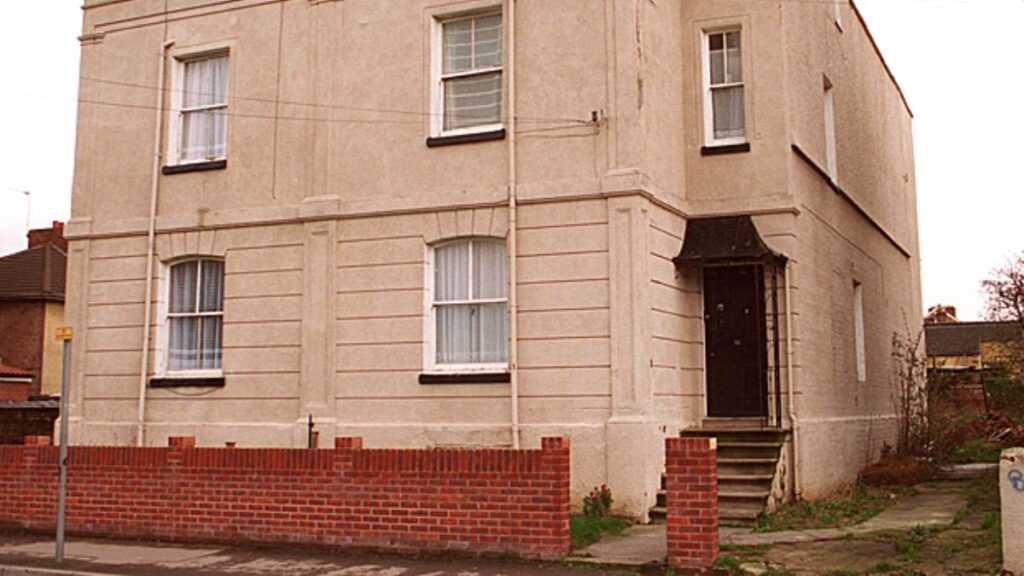
Fred and Rosemary West were a British couple whose crimes became some of the most shocking and gruesome in modern UK history. Together, they were responsible for the torture, sexual assault, and murder of at least 12 young women and girls, including their own daughter, between 1967 and 1987.
Fred West was already a convicted sex offender when he met Rosemary in the late 1960s. The couple married and soon began luring vulnerable young women to their home at 25 Cromwell Street in Gloucester, which later became infamously known as the “House of Horrors.” Many of their victims were buried in the cellar or beneath the garden patio.
The crimes involved extreme sadism, with victims often subjected to prolonged physical and sexual abuse before being murdered. Several of the victims were lodgers, acquaintances, or even family members. Rosemary also engaged in sex work, and Fred is believed to have begun killing before their relationship even started.
The full extent of their crimes was uncovered in 1994 after one of their children revealed abuse to authorities. Fred was arrested but died by suicide in his prison cell in 1995 before he could stand trial. Rosemary West was convicted of 10 murders and is currently serving a life sentence with no possibility of parole.
Their case remains one of the most disturbing in UK criminal history, both for the brutality of the crimes and the fact that they were carried out over decades without detection. Their home at 25 Cromwell Street was later demolished, and the site was permanently sealed to prevent it from becoming a macabre tourist attraction.
9. Jeffrey Dahmer’s Apartment
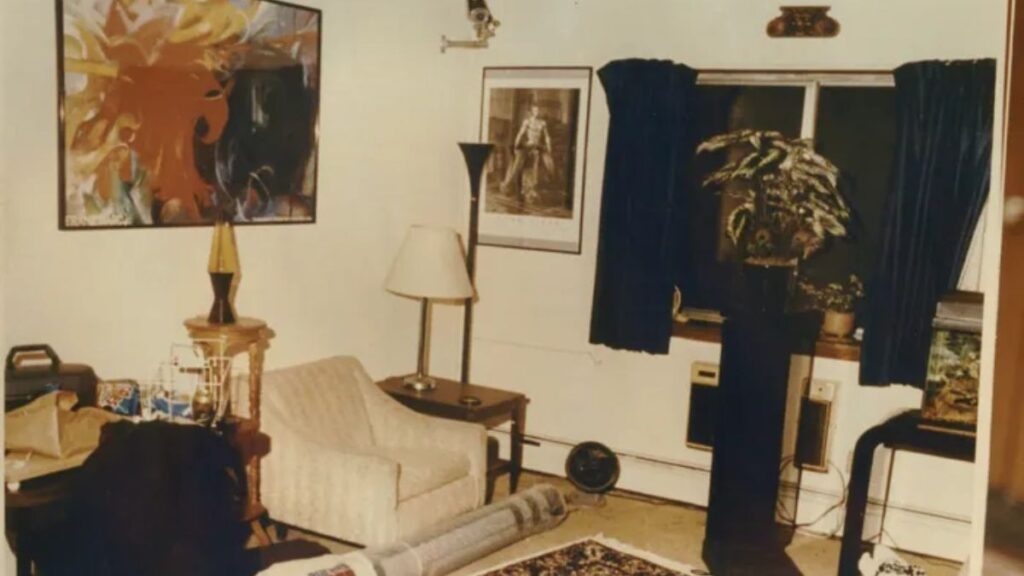
Jeffrey Dahmer, also known as the Milwaukee Cannibal, was an American serial killer and sex offender whose crimes shocked the world with their brutality and depravity. Between 1978 and 1991, Dahmer murdered 17 young men and boys, many of whom were people of color and from marginalized communities.
Dahmer’s crimes went far beyond murder. He drugged, sexually assaulted, dismembered, and in some cases cannibalized his victims. He also kept body parts, such as skulls and organs, as trophies, and attempted to create “zombies” by drilling holes in the skulls of living victims and injecting acid in a grotesque effort to make them compliant companions.
Raised in Ohio and later living in Milwaukee, Dahmer showed early signs of disturbing behavior, including a fascination with dead animals. His first murder occurred at age 18, but it wasn’t until he moved into an apartment in Milwaukee that his crimes escalated into a deadly pattern.
His killing spree ended in July 1991 when Tracy Edwards, a would-be victim, managed to escape and alert police. Authorities discovered a horror scene inside Dahmer’s apartment—human remains stored in the fridge and freezer, photos of dismembered bodies, and tools of torture.
Dahmer confessed to all 17 murders and was sentenced to 15 consecutive life terms. However, in 1994, he was beaten to death in prison by a fellow inmate.
Jeffrey Dahmer’s crimes raised serious questions about policing, race, and missed warning signs. Several of his victims might have been saved had earlier reports of suspicious behavior been taken seriously. His apartment at 924 North 25th Street was eventually demolished in 1992 to erase the physical reminder of his atrocities.
8. John Wayne Gacy’s Home
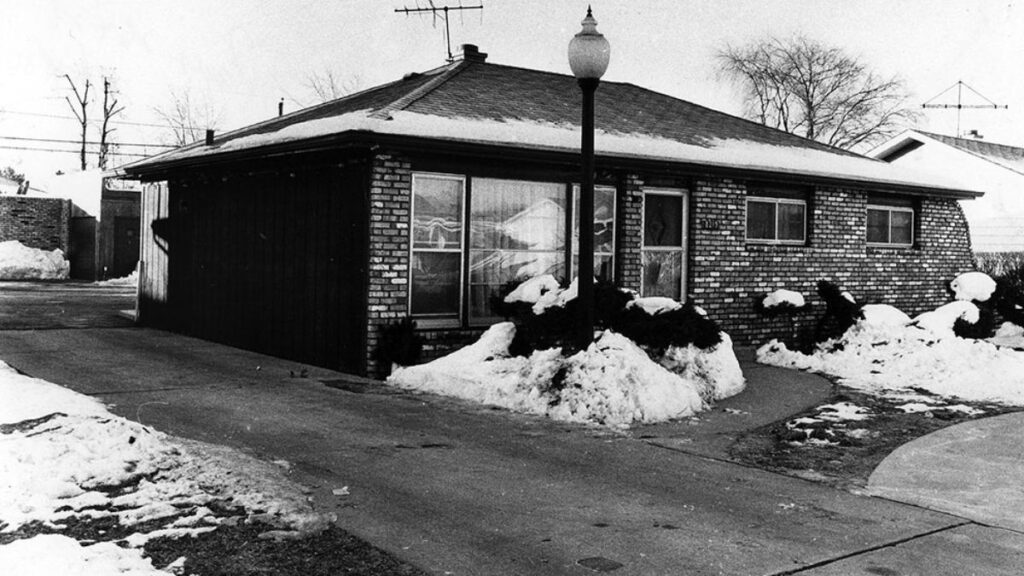
John Wayne Gacy, often referred to as the “Killer Clown,” was one of America’s most notorious serial killers. Between 1972 and 1978, Gacy sexually assaulted, tortured, and murdered at least 33 young men and boys in and around Chicago, Illinois. His crimes shocked the nation not only for their scale but for the disturbing double life he led.
By day, Gacy was a well-liked community member. He hosted neighborhood barbecues, ran a construction business, and even performed at children’s parties dressed as a clown named “Pogo.” By night, he lured victims to his home with promises of work or friendship, only to subject them to horrific abuse and murder.
Most of his victims were strangled and buried in the crawl space beneath his modest suburban home at 8213 West Summerdale Avenue. When that space filled, he began disposing of bodies in the nearby Des Plaines River. Many of his victims were never identified.
Gacy was arrested in December 1978 after one of his victims, 15-year-old Robert Piest, went missing. A search of Gacy’s home revealed human remains and evidence linking him to multiple disappearances. He confessed shortly afterward.
In 1980, Gacy was convicted of 33 murders and sentenced to death. He spent 14 years on death row and was executed by lethal injection in 1994. During his time in prison, he painted clowns and sold his artwork, further fueling public fascination and revulsion.
The house where Gacy committed his crimes was demolished in 1979, four months after his arrest, and the lot was eventually renumbered to discourage morbid curiosity.
7. Ariel Castro’s House
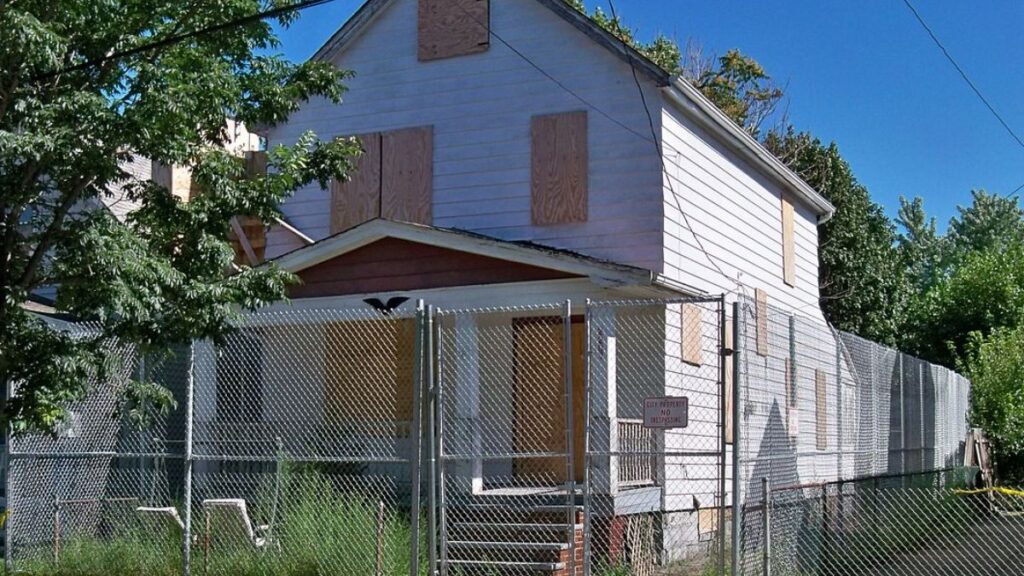
Ariel Castro was an American kidnapper, rapist, and murderer whose crimes horrified the world when they came to light in 2013. For more than a decade, Castro held three women, Michelle Knight, Amanda Berry, and Gina DeJesus, captive in his Cleveland, Ohio home, subjecting them to years of unimaginable abuse.
Castro, a former school bus driver, abducted the women between 2002 and 2004, each under the guise of offering a ride or assistance. Once inside his home at 2207 Seymour Avenue, the women were chained, beaten, starved, and repeatedly raped. They were kept in locked rooms with boarded-up windows and subjected to psychological torment as well as physical torture.
Castro fathered a child with Amanda Berry during her captivity; she gave birth in the house with help from Michelle Knight, under threat of death if anything went wrong. Despite opportunities to escape over the years, the women were too physically and emotionally controlled to act—until May 6, 2013, when Berry managed to break through a locked door and scream for help, leading to their dramatic rescue.
The discovery shocked the nation, not only due to the horrific details but also because the crimes occurred in a residential neighborhood, unnoticed for years despite several red flags and missed opportunities by law enforcement.
Castro was arrested immediately and later pled guilty to 937 criminal charges, including kidnapping, rape, and aggravated murder (for forcibly causing the miscarriage of one of Knight’s pregnancies). He was sentenced to life in prison without parole plus 1,000 years. Just over a month into his sentence, on September 3, 2013, Ariel Castro was found dead by suicide in his prison cell.
His house at 2207 Seymour Avenue was demolished in August 2013, just weeks after his sentencing. The lot was cleared at the request of the victims and community to symbolically erase the site of so much pain and trauma.
6. The Petit Family Home
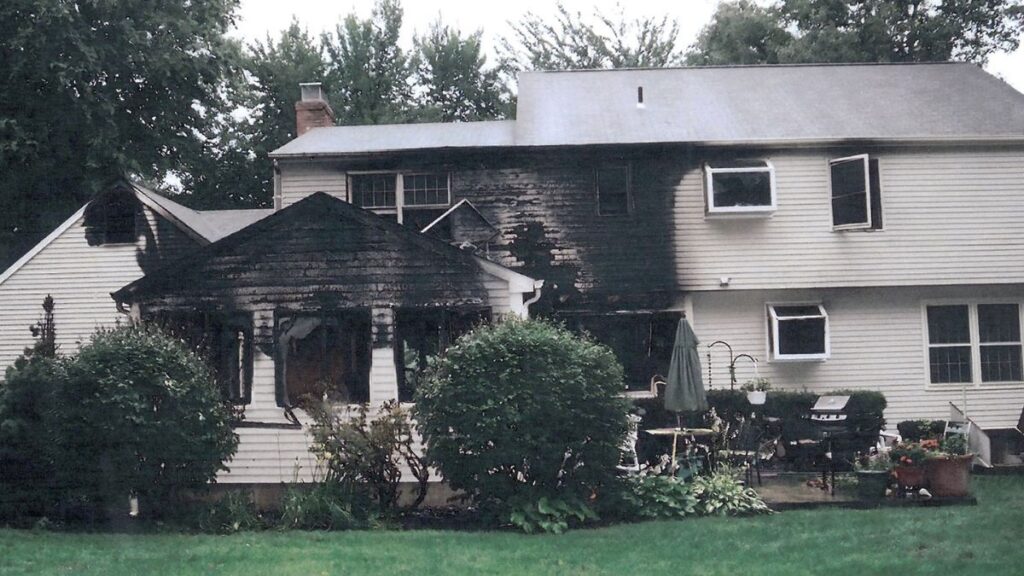
The Petit family home invasion in July 2007 stands as one of the most disturbing and widely publicized crimes in Connecticut’s history. Dr. William Petit, his wife Jennifer Hawke-Petit, and their daughters, 17-year-old Hayley and 11-year-old Michaela, endured a brutal and random attack at their Cheshire residence.
Perpetrators Steven Hayes and Joshua Komisarjevsky broke into the home, with Hayes initially striking William Petit with a baseball bat before binding the family members. They then forced Jennifer to accompany them to a bank to withdraw cash. While at the bank, Jennifer bravely alerted a teller to their harrowing situation. However, the responding police officers unfortunately failed to intervene in time. As the mother and daughters were brutalized and murdered inside, authorities focused on setting up a perimeter around the home rather than immediate entry.
William Petit miraculously managed to escape as the perpetrators set the house ablaze. Following the horrific events, the remainder of the family home was demolished, reportedly in July 2008, and the lot has since been transformed into a peaceful memorial garden dedicated to the family.
5. The Bloody Benders’ House
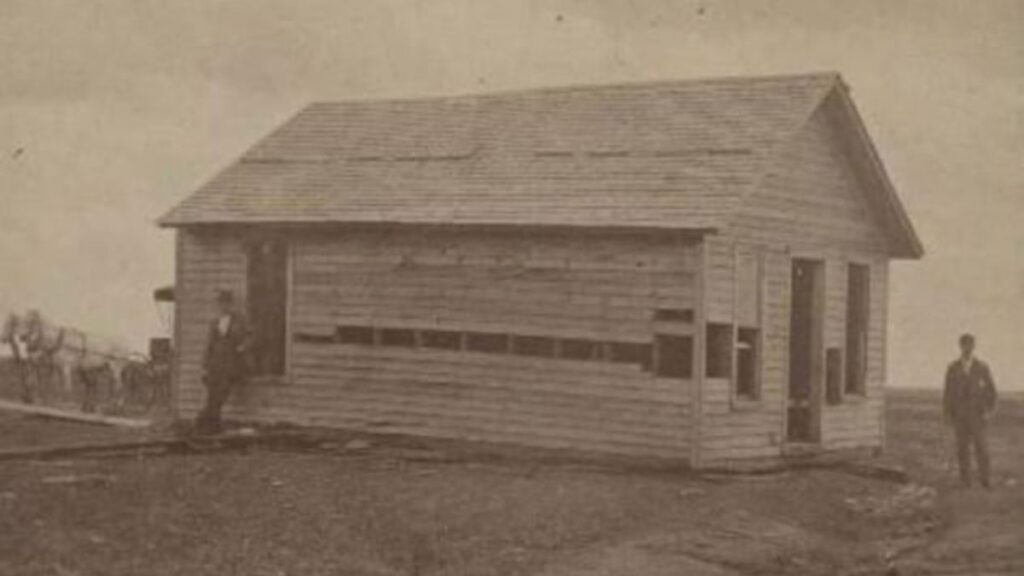
More than 140 years ago, in southeastern Kansas, a family of settlers turned their quiet homestead into one of the most gruesome crime scenes in American history. Known to the world as the Bloody Benders, this seemingly ordinary household consisted of John Bender Sr., his wife, Elvira, their son, John Jr., and a young woman named Kate, believed by some to be John Jr.’s sister and by others to be his common-law wife. From 1869 to 1872, the Benders operated a small general store and inn near the Osage Trail, offering weary travelers food, supplies, and a place to rest. But for many who stepped inside their cabin, it was a trap they would never escape.
The Benders had a terrifyingly methodical routine. Visitors were seated with their backs to a canvas curtain, behind which one of the men waited in silence. As Kate distracted the guest with conversation or spiritual readings (she was known locally as a medium and healer), John Sr. or Jr. would strike the victim in the head with a hammer. The body would then be dumped through a trapdoor into the cellar, where the victim’s throat was slit and their possessions stolen. When concerned locals began to notice a disturbing number of disappearances along the trail, a town meeting was called. Suspicion soon fell on the Benders, but before any formal search could take place, the family vanished without a trace, abandoning their home and belongings.
What investigators found next horrified the nation. The Benders’ property reeked of death, and a search of the grounds uncovered eleven bodies, many of them buried in shallow graves in the orchard behind the house. Most had crushed skulls and slit throats, including a young girl believed to have been buried alive. Some estimates suggest the Benders may have murdered up to 21 people, though the actual number remains unknown. Despite massive manhunts and countless sightings over the years, the family was never captured.
The Bender home was eventually torn down by angry locals, and today, all that remains of the site is an unmarked stretch of gravel road near Cherryvale, Kansas—a haunting reminder of the prairie’s darkest legend.
4. Ted Bundy’s House
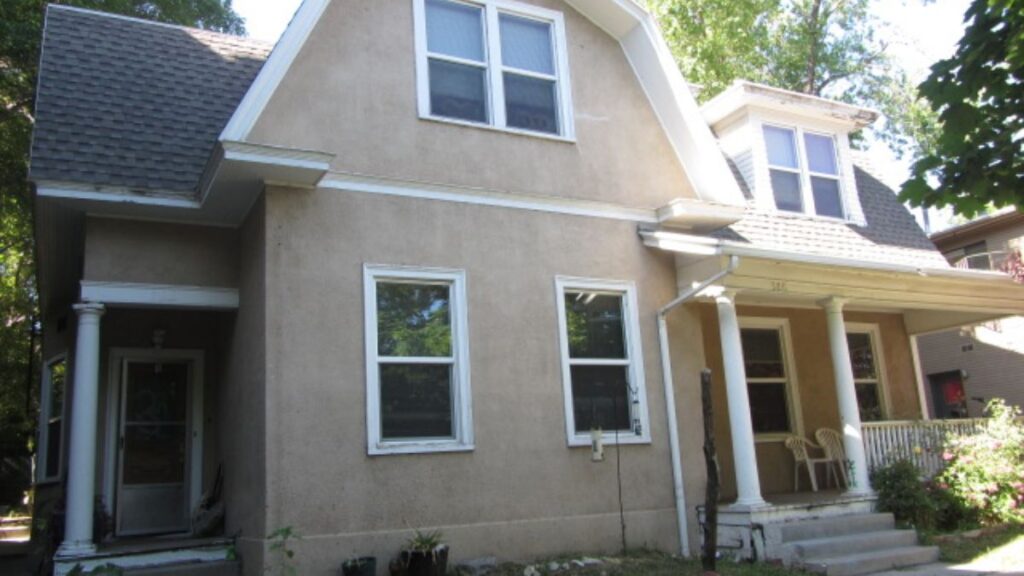
Ted Bundy is one of the most infamous serial killers in American history—charming on the surface, yet hiding a monstrous darkness. Active primarily in the 1970s, Bundy confessed to the murders of 30 women, though the actual number is suspected to be much higher. His crimes spanned multiple states, including Washington, Oregon, Utah, Colorado, and Florida, and were characterized by abduction, sexual assault, and murder, often followed by necrophilia. Bundy’s ability to appear charismatic and intelligent allowed him to lure victims with ease, sometimes pretending to be injured to gain their sympathy.
One location tied closely to Bundy’s early crimes was a small rooming house at 565 First Avenue in Salt Lake City, Utah, where he lived in 1974 while attending the University of Utah’s law school. Investigators later found evidence connecting the house to several disappearances, and it’s believed that Bundy may have planned, and possibly even committed, some of his murders there. Over time, the home gained a disturbing reputation among locals.
In August 2017, the house was quietly demolished, decades after Bundy’s crimes and execution. The decision came after the property had sat vacant for years and had become a source of discomfort for the community. Some people reported strange occurrences inside—such as unexplained sounds, cold spots, and feelings of dread—leading some to consider the home haunted.
While Bundy was ultimately captured in 1978 and executed by electric chair in 1989 at Florida State Prison, the demolition of the Salt Lake City house served as a symbolic erasure of one of the places tied to his reign of terror.
3. Anthony Sowell’s House
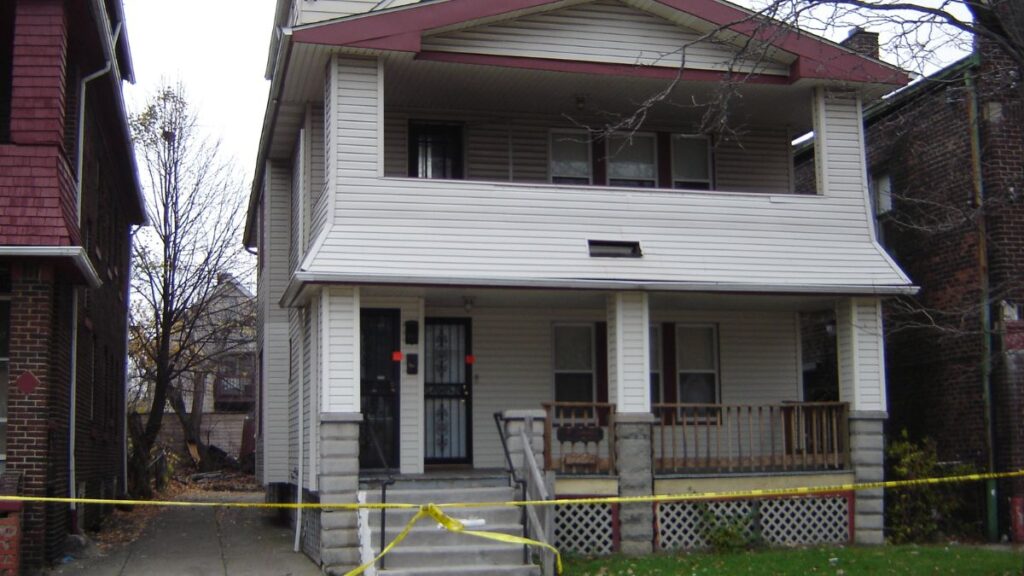
Anthony Edward Sowell, infamously known as “The Cleveland Strangler,” was an American serial killer and sex offender whose crimes terrorized Cleveland, Ohio, from 2007 to 2009. Sowell’s house at 12205 Imperial Avenue in Cleveland, Ohio, gained national infamy in 2009 when it was revealed to be the site of one of the most disturbing serial murder cases in modern U.S. history.
Known as the “House of Horrors,” the property concealed the remains of 11 women, all of whom had been raped, strangled, and left to decompose inside the home or buried in the backyard and crawl spaces. For years, Sowell lured vulnerable women, often struggling with addiction or homelessness, into his home under the guise of friendship or shelter. Despite frequent complaints from neighbors about a foul odor, the truth only came to light after a woman escaped from his home and alerted police, leading to the grisly discovery.
The house became a symbol of tragedy and community neglect, standing as a physical reminder of the violence committed within. In December 2011, the city of Cleveland demolished the home, with many residents and victims’ families watching as it was torn down. The site remained vacant for nearly a decade until it was transformed into a memorial.
In July 2021, the “Garden of Eleven Angels” was officially dedicated—an elegant and peaceful green space featuring a black granite monument that honors each of the women lost.
2. Myra Hindley And Ian Brady’s House
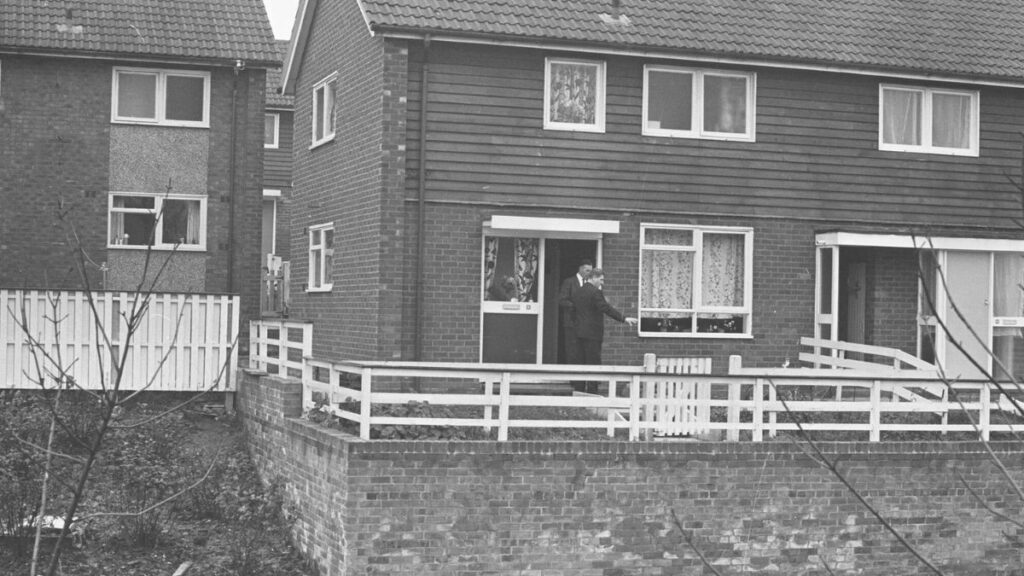
Myra Hindley and Ian Brady are widely regarded as the embodiment of evil in modern British history. Between 1963 and 1965, the pair abducted, tortured, and murdered five children in what came to be known as the Moors Murders. The victims were Pauline Reade (16), John Kilbride (12), Keith Bennett (12), Lesley Ann Downey (10), and Edward Evans (17).
Their crimes were methodical and sadistic: the victims were lured into Brady and Hindley’s car or home, subjected to unspeakable abuse, and in several cases, recorded as they begged for their lives. Three of the victims’ bodies were eventually recovered from shallow graves on Saddleworth Moor, a desolate, windswept expanse near Manchester.
But Keith Bennett’s remains were never found, despite repeated searches and decades of pleas from his grieving mother. Both Hindley and Brady refused to reveal the location, using the truth as a weapon until their deaths, Hindley in 2002, and Brady in 2017.
The house they shared, 16 Wardle Brook Avenue in Hattersley, Cheshire, was as much a part of the horror as the moor itself. It was there that Edward Evans, their final known victim, was brutally murdered with an axe in the living room, a crime so shocking it finally led to their arrest. Following their capture in 1965, the house stood as a grotesque reminder of the murders for over two decades.
It remained uninhabited and untouched, with locals unwilling to live where such atrocities had occurred. In 1987, authorities made the decision to demolish the property, effectively erasing the physical structure from the neighborhood. To this day, the lot remains vacant, a quiet patch of grass that marks a place where innocence was lost and evil once lived.
1. Dr. H.H. Holmes’ Murder Castle
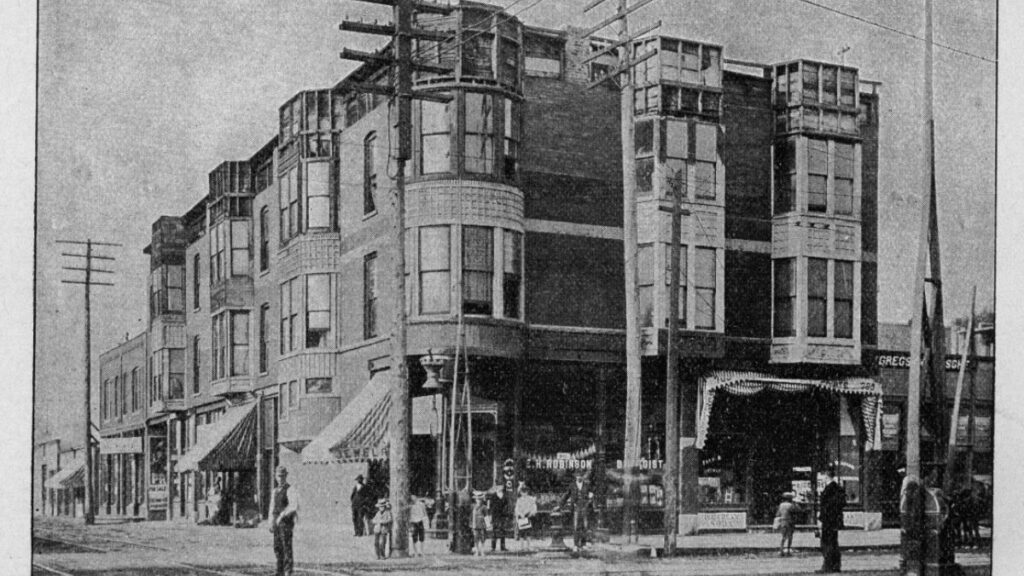
In 1885, Dr. H.H. Holmes, born Herman Webster Mudgett, moved to the Englewood neighborhood of Chicago, where he began constructing what would become one of the most chilling structures in American criminal history: the so-called “Murder Castle.” Located at 63rd and Wallace Streets, the building was initially designed to function as a hotel and pharmacy, but behind its walls lay a nightmarish maze of death.
Holmes personally oversaw the ever-changing construction, frequently hiring and firing crews to keep anyone from understanding the layout. The result was a labyrinthine, three-story building filled with secret passages, trapdoors, soundproof rooms, gas chambers, and chutes that dropped bodies directly into the basement, where Holmes had a dissection table, acid vats, quicklime pits, and a crematorium.
Holmes used the castle as a lure, particularly during the 1893 World’s Columbian Exposition, drawing in young women and tourists under the guise of offering employment or lodging. He murdered primarily for financial gain, often stripping the flesh from his victims’ bodies and selling their skeletons to medical schools.
While Holmes confessed to 27 murders, many of which were later proven false or unverifiable, some estimates suggest he may have killed as many as 200 people, making him one of America’s first known serial killers. He was eventually caught, convicted, and executed by hanging in 1896 at Moyamensing Prison in Philadelphia.
The infamous Murder Castle itself stood for decades, largely abandoned and feared by locals, until it was torn down in 1938. Today, a U.S. Post Office occupies the site. However, despite its ordinary appearance, Chicago ghost tours still visit the location, and its sinister past continues to cast a long, chilling shadow over the city.
- 10 Disturbing Messages Captured by Cockpit Voice Recorders (CVRs) - July 22, 2025
- 10 Must-Watch Korean Horror Films that Define the Genre - July 22, 2025
- 10 Ghost Stories from Haunted Trails in U.S. National Parks - July 21, 2025

